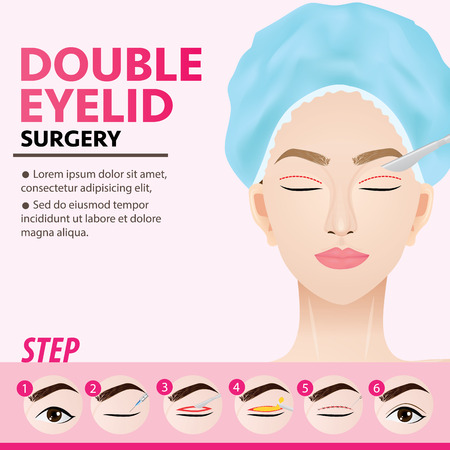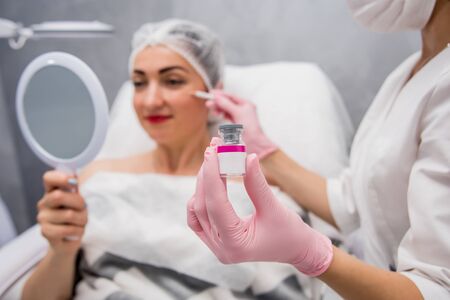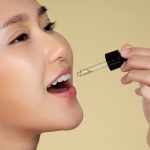1. What Are Dermal Fillers?
Dermal fillers are a popular non-surgical cosmetic treatment designed to enhance facial features and restore lost volume. As we age, our skin naturally loses collagen, hyaluronic acid, and fat, leading to sagging, wrinkles, and a less youthful appearance. Dermal fillers help counteract these effects by adding volume and smoothing out fine lines.
How Do Dermal Fillers Work?
Dermal fillers are injectable substances that add fullness to areas of the face that have lost volume over time. They can plump up lips, smooth out wrinkles, contour cheeks, and even improve the appearance of scars. Most fillers contain hyaluronic acid, a naturally occurring substance in the body that retains moisture and keeps the skin hydrated.
Common Uses for Dermal Fillers
Dermal fillers are versatile and can be used in various areas of the face to enhance natural beauty. Here are some common applications:
| Area | Purpose |
|---|---|
| Lips | Adds volume, enhances shape, and defines borders. |
| Cheeks | Restores lost volume and provides a lifted appearance. |
| Nasolabial Folds (Smile Lines) | Softens deep creases between the nose and mouth. |
| Under Eyes (Tear Troughs) | Reduces hollowness and dark circles for a refreshed look. |
| Jawline & Chin | Defines contours for a more sculpted profile. |
| Nose (Non-Surgical Rhinoplasty) | Straightens or reshapes the nose without surgery. |
Types of Dermal Fillers
There are different types of dermal fillers available, each formulated for specific purposes. The most common types include:
- Hyaluronic Acid (HA) Fillers: Popular brands like Juvederm and Restylane use HA to provide hydration and volume.
- Calcium Hydroxylapatite (CaHA) Fillers: Radiesse is an example of this type, which stimulates collagen production for long-term benefits.
- Poly-L-Lactic Acid Fillers: Sculptra helps stimulate collagen growth over time to improve skin texture and firmness.
- Polymethylmethacrylate (PMMA) Fillers: Bellafill offers semi-permanent results by providing structural support under the skin.
How Long Do Dermal Fillers Last?
The longevity of dermal fillers depends on the type of filler used and the area treated. Heres a general guide:
| Filler Type | Duration |
|---|---|
| Hyaluronic Acid (HA) Fillers | 6-18 months |
| Calcium Hydroxylapatite (CaHA) Fillers | 12-18 months |
| Poly-L-Lactic Acid Fillers | Up to 2 years |
| Polymethylmethacrylate (PMMA) Fillers | Permanent with touch-ups as needed |
Are Dermal Fillers Safe?
Dermal fillers are generally safe when administered by a trained professional. However, as with any cosmetic procedure, there are potential risks such as swelling, bruising, or allergic reactions. It’s important to choose a qualified provider to ensure safe and natural-looking results.
Key Takeaways:
- Dermal fillers restore lost volume and enhance facial features.
- The most common ingredient in fillers is hyaluronic acid.
- Treatments can last anywhere from 6 months to several years depending on the filler type.
- A skilled injector is essential for achieving safe and natural-looking results.
If youre considering dermal fillers, its always best to consult with a licensed practitioner who can recommend the right treatment based on your individual needs.
2. Types of Dermal Fillers and Their Uses
When it comes to dermal fillers, not all are created equal. There are different types of fillers designed for specific uses, and understanding their differences can help you make the best choice for your aesthetic goals. Below, we break down the most common types of dermal fillers and their applications.
Hyaluronic Acid (HA) Fillers
Hyaluronic acid is one of the most popular types of dermal fillers. It is a naturally occurring substance in the body that helps retain moisture and keep the skin looking plump and hydrated.
Common Uses:
- Smoothing fine lines and wrinkles
- Adding volume to lips
- Enhancing cheekbones
- Filling under-eye hollows
- Improving skin hydration
Popular Brands:
- Juvederm®
- Restylane®
- Belotero®
Calcium Hydroxylapatite (CaHA) Fillers
This type of filler consists of calcium-based microspheres suspended in a gel. It provides more structure than HA fillers and stimulates natural collagen production.
Common Uses:
- Treating deeper wrinkles and folds
- Adds volume to areas with significant volume loss
- Sculpting jawlines
- Nonsurgical nose contouring
Popular Brand:
- Radiesse®
Poly-L-Lactic Acid (PLLA) Fillers
This biodegradable filler works by stimulating collagen production over time, making it ideal for long-term volume restoration.
Common Uses:
- Treating deep facial wrinkles
- Adds volume to sunken cheeks or temples
- Smoothing nasolabial folds (smile lines)
- Treating facial lipoatrophy (fat loss in the face)
Popular Brand:
- Sculptra® Aesthetic
A Quick Comparison of Dermal Fillers
| Type of Filler | Main Ingredient | Main Uses | Lifespan | Popular Brands |
|---|---|---|---|---|
| Hyaluronic Acid (HA) | Naturally occurring hyaluronic acid | Lip enhancement, wrinkle reduction, cheek augmentation, hydration boost | 6-18 months | Juvederm®, Restylane®, Belotero® |
| Calcium Hydroxylapatite (CaHA) | Chemically similar to bones and teeth minerals | Treating deep wrinkles, adding structure, jawline contouring | Around 12 months | Radiesse® |
| Poly-L-Lactic Acid (PLLA) | Synthetic polymer that stimulates collagen production | Treating severe wrinkles, restoring lost volume over time, facial sculpting | Around 2 years (gradual results) | Sculptra® Aesthetic |
The right dermal filler for you depends on your individual needs and desired results. Always consult with a qualified provider to determine the best option for your unique facial structure and aesthetic goals.

3. The Treatment Process: What to Expect
Getting dermal fillers is a straightforward process, but knowing what to expect can help ease any nerves and ensure the best results. Here’s a step-by-step guide on how the procedure works, from consultation to post-treatment care.
Step 1: Initial Consultation
Your journey begins with a consultation with a licensed provider. During this appointment, you’ll discuss your aesthetic goals, medical history, and any concerns you may have. Your provider will assess your facial structure and recommend the best type of filler for your needs.
What Happens During the Consultation?
- A discussion about your desired results
- An evaluation of your skin and facial structure
- A review of potential risks and benefits
- A plan outlining the treatment areas and expected outcomes
Step 2: Preparing for the Procedure
Once you decide to move forward, your provider will give you pre-treatment instructions. These may include avoiding alcohol, blood-thinning medications, and certain supplements for a few days before your appointment to reduce bruising risk.
Step 3: The Injection Process
The actual filler injection process is quick and relatively painless. Here’s what typically happens:
| Step | Description |
|---|---|
| Cleansing | The treatment area is cleaned to prevent infection. |
| Numbing (Optional) | A topical anesthetic or ice may be applied for comfort. |
| Injection | The provider carefully injects the filler into targeted areas. |
| Massage | The treated area may be gently massaged to distribute the filler evenly. |
| Assessment | Your provider checks symmetry and makes any necessary adjustments. |
Step 4: Post-Treatment Care & Recovery
After receiving dermal fillers, proper aftercare is essential for optimal results. You might experience mild swelling or bruising, but these effects usually subside within a few days.
Pain Management & Recovery Tips:
- Avoid touching or massaging the treated area for at least 24 hours.
- Apply ice packs to reduce swelling and discomfort.
- Avoid strenuous exercise, alcohol, and excessive sun exposure for 24-48 hours.
- If needed, take over-the-counter pain relievers like acetaminophen (Tylenol) as directed by your provider.
How Long Does Recovery Take?
| Timeframe | What to Expect |
|---|---|
| First 24 Hours | Mild swelling, redness, and possible bruising. |
| 2-3 Days | Slight tenderness; swelling starts to subside. |
| 1 Week | The majority of swelling and bruising should be gone. |
| 2 Weeks | The final results become visible as fillers settle in. |
Your provider may schedule a follow-up appointment to ensure you’re happy with your results and make any necessary touch-ups. Following aftercare instructions will help you enjoy long-lasting, beautiful results!
4. Risks, Side Effects, and Safety Considerations
While dermal fillers are generally safe when administered by a qualified professional, it’s important to understand the potential risks and side effects before undergoing treatment. Knowing what to expect can help you make an informed decision and minimize any complications.
Common Side Effects
Most side effects from dermal fillers are mild and temporary. These typically occur at the injection site and resolve within a few days.
| Side Effect | Description | Duration |
|---|---|---|
| Redness | Mild irritation at the injection site | A few hours to a couple of days |
| Swelling | Slight puffiness around the treated area | A few days |
| Bruising | Minor bruising due to needle insertion | A few days to a week |
| Tenderness | Sensitivity at the injection site | A few days |
| Lumps or Bumps | Slight irregularities under the skin that usually smooth out on their own | A few weeks or less |
Potential Risks and Complications
Though rare, some individuals may experience more serious complications. It’s crucial to recognize these risks and seek medical attention if needed.
- Infection: Any injection carries a small risk of infection, though this is rare when proper hygiene is followed.
- Nodules or Granulomas: Hard lumps may form under the skin, requiring further treatment.
- Tissue Damage: If filler is injected into a blood vessel, it can block circulation and cause tissue damage.
- Poor Results: Uneven distribution or overfilling can lead to unnatural-looking results that may need correction.
- Allergic Reactions: While uncommon, some individuals may have an allergic reaction to certain filler ingredients.
Your Safety Checklist Before Getting Dermal Fillers
The best way to ensure a safe experience is by choosing a highly qualified provider and taking precautions before your procedure.
Selecting a Qualified Provider
- Select a Licensed Injector: Choose a board-certified dermatologist, plastic surgeon, or trained medical professional with experience in dermal fillers.
- Avoid Unregulated Providers: Steer clear of non-medical settings like salons or unlicensed practitioners offering cheap treatments.
- Check Their Portfolio: Ask for before-and-after photos of previous patients to assess their expertise.
- Sterile Environment: Ensure the procedure is performed in a clean, medical setting using sterile equipment.
- A Consultation First: A reputable provider will always conduct a consultation to discuss your goals, medical history, and possible risks.
Precautions Before Your Appointment
- Avoid Blood Thinners: To reduce bruising, avoid aspirin, ibuprofen, and alcohol for at least 24-48 hours before treatment (unless prescribed by your doctor).
- Certain Supplements Matter: Supplements like fish oil, vitamin E, and ginkgo biloba can also increase bruising—consider pausing them temporarily if approved by your physician.
- No Major Events Right After: Plan your appointment at least one to two weeks before any important events in case of swelling or bruising.
- Mention Any Health Conditions: If you have allergies, autoimmune conditions, or are pregnant/nursing, consult with your doctor before getting fillers.
- Avoid Overfilling: Trust your provider’s recommendations rather than requesting excessive amounts of filler at once—it’s always better to start conservatively.
The Bottom Line on Safety
Dermal fillers can enhance your appearance when done correctly, but understanding the risks and selecting the right provider is key. By taking necessary precautions and knowing what to expect, you can achieve beautiful results safely and confidently.
5. How to Maintain and Prolong Your Results
Getting dermal fillers is an investment in your appearance, so its important to take the right steps to maintain and extend your results. With proper aftercare, a healthy lifestyle, and regular touch-up treatments, you can keep your skin looking youthful and refreshed for as long as possible.
Expert Tips for Aftercare
Right after your filler treatment, following the correct aftercare routine will help reduce swelling, prevent complications, and ensure optimal results.
Immediate Post-Treatment Care
- Avoid Touching the Area: Refrain from massaging or pressing on the treated area for at least 24 hours.
- Reduce Swelling: Apply a cold compress gently if needed, but avoid direct pressure.
- Stay Upright: Try to sleep with your head elevated the first night to minimize swelling.
- Avoid Strenuous Exercise: Wait at least 24-48 hours before resuming intense workouts.
What to Avoid
- No Alcohol or Blood Thinners: Avoid alcohol and medications like aspirin or ibuprofen for at least 24 hours to minimize bruising.
- Skip Saunas and Hot Showers: Excessive heat can worsen swelling and should be avoided for a few days.
- No Facials or Massages: Avoid facial treatments or massages around the injected areas for at least two weeks.
Lifestyle Factors That Affect Longevity
Your daily habits play a huge role in how long your fillers last. Making small changes can significantly extend your results.
| Lifestyle Factor | How It Helps Your Fillers Last Longer |
|---|---|
| Avoid Excess Sun Exposure | UV rays break down collagen faster, shortening filler longevity. Always wear SPF 30+ sunscreen. |
| Stay Hydrated | Hyaluronic acid-based fillers absorb water, so drinking plenty of fluids keeps them plump. |
| No Smoking | Cigarettes speed up aging and degrade fillers more quickly. |
| A Healthy Diet | Nutrient-rich foods support skin health and slow filler breakdown. |
| Avoid Excessive Stress | Chronic stress increases cortisol levels, which accelerates skin aging and affects fillers. |
The Importance of Touch-Up Treatments
No filler lasts forever, but strategically timed touch-ups can help maintain your desired look without overdoing it. Here’s what you need to know:
When to Schedule a Touch-Up
- Lip Fillers: Every 6-12 months
- Chemical-Based Fillers (e.g., Juvederm, Restylane): Every 12-18 months
- Semi-Permanent Fillers (e.g., Radiesse, Sculptra): Every 18-24 months
The Benefits of Regular Maintenance
- Keeps your results looking natural by preventing drastic changes between treatments.
- Makes future appointments easier since less product may be needed with consistent upkeep.
- Saves money in the long run by avoiding complete reinjections when fillers fully dissolve.
If youre unsure when to book your next appointment, consult with your provider. They can assess how well your fillers are holding up and recommend the best timeline for maintenance treatments.


